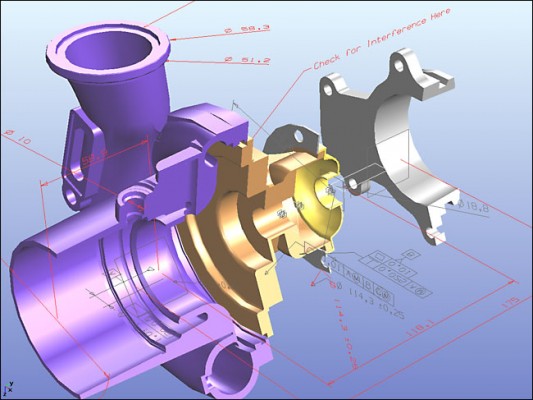The approval is a win for Siemens, which has been building and extending the JT viewing format for years. ISO approval will do for JT in manufacturing what it did for PDF in archiving.
The International Organization for Standards (ISO) has approved the JT data format as an international standard for 3D model visualization and product data visualization. This is a win for General Motors as much as it is a win for Siemens.

The JT data format is a lightweight data format for viewing and sharing digital 3D product information in real-time. Manufacturers currently using JT are able to move 3D product data among most CAD and PLM products, either directly or via intermediate conversion tools.
Acceptance as the first ISO standard for lightweight 3D visualization will likely spur acceptance beyond its current strongholds in automotive. Siemens PLM Software worked with ProSTEP iViP, a global consortium on open standards in manufacturing, to complete the process of gaining ISO International Standard status for JT. ProSTEP iViP was also instrumental in the publication of the JT File Format Reference document as a Publicly Available Specification (ISO PAS 14306) in October 2009, which was the first step towards becoming an International Standard.
General Motors has used the JT file format for more than a decade, and has been a champion of ot the format in automotive manufacturing. “JT allows our team to easily communicate design data across the enterprise and our supply chain, improving our ability to communicate and collaborate visually. For this reason, we are very pleased to see JT finally recognized as an ISO International Standard.” says Nick Bell, CIO Global Product Development, General Motors.
Our take
Siemens submitted the JT format for consideration as an ISO standard in 2007. Reporting on the submission, one of our predecessor publications, Engineering Automation Report, said, “We believe this is not just a bold move by UGS but also one that will turn JT into a true industry leader.” Five years later, JT has been accepted by ISO and there are still competing standards, both open and proprietary. Lattice Technology publishes XVL, which has the strong support of Dassault Systèmes (which bases its Catia file format on XVL technology). Lattice licenses the format but has not worked to make it an open standard guided by an industry committee. 3D PDF is also an ISO standard, and has been gaining traction in manufacturing. But some users don’t like the large file sizes and long conversion times associated with 3D PDF.
During the interim where JT was moving from a proposed standard to an accepted one, more and more vendors of engineering tools added it to the list of supported formats. The ISO seal will only accelerate that trend, putting even more pressure on Lattice and Dassault to move XVL toward open accreditation.
PDF as an ISO standard has been a hit for document archiving, but its adoption as an interoperability standard in manufacturing has been slower. This upgrade in status for JT will cause some manufacturers to rethink their data sharing standards.





